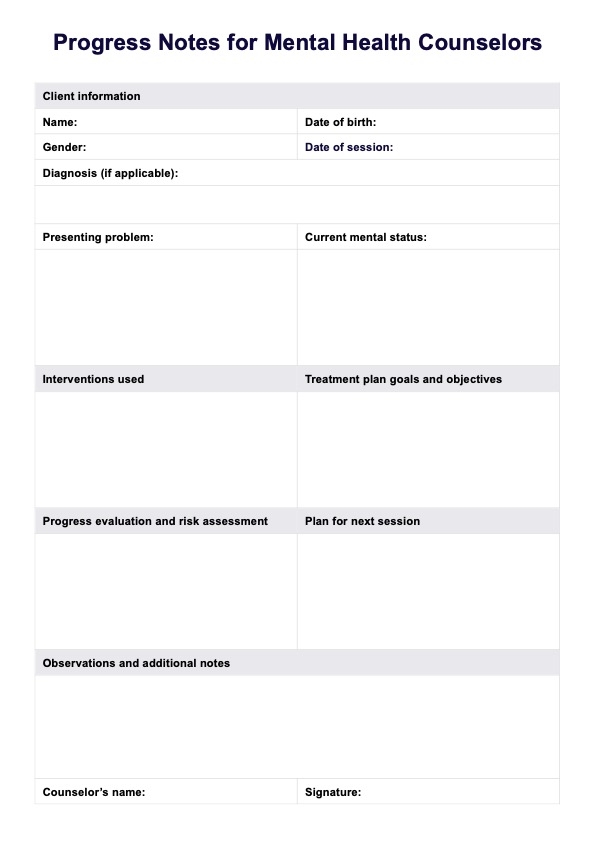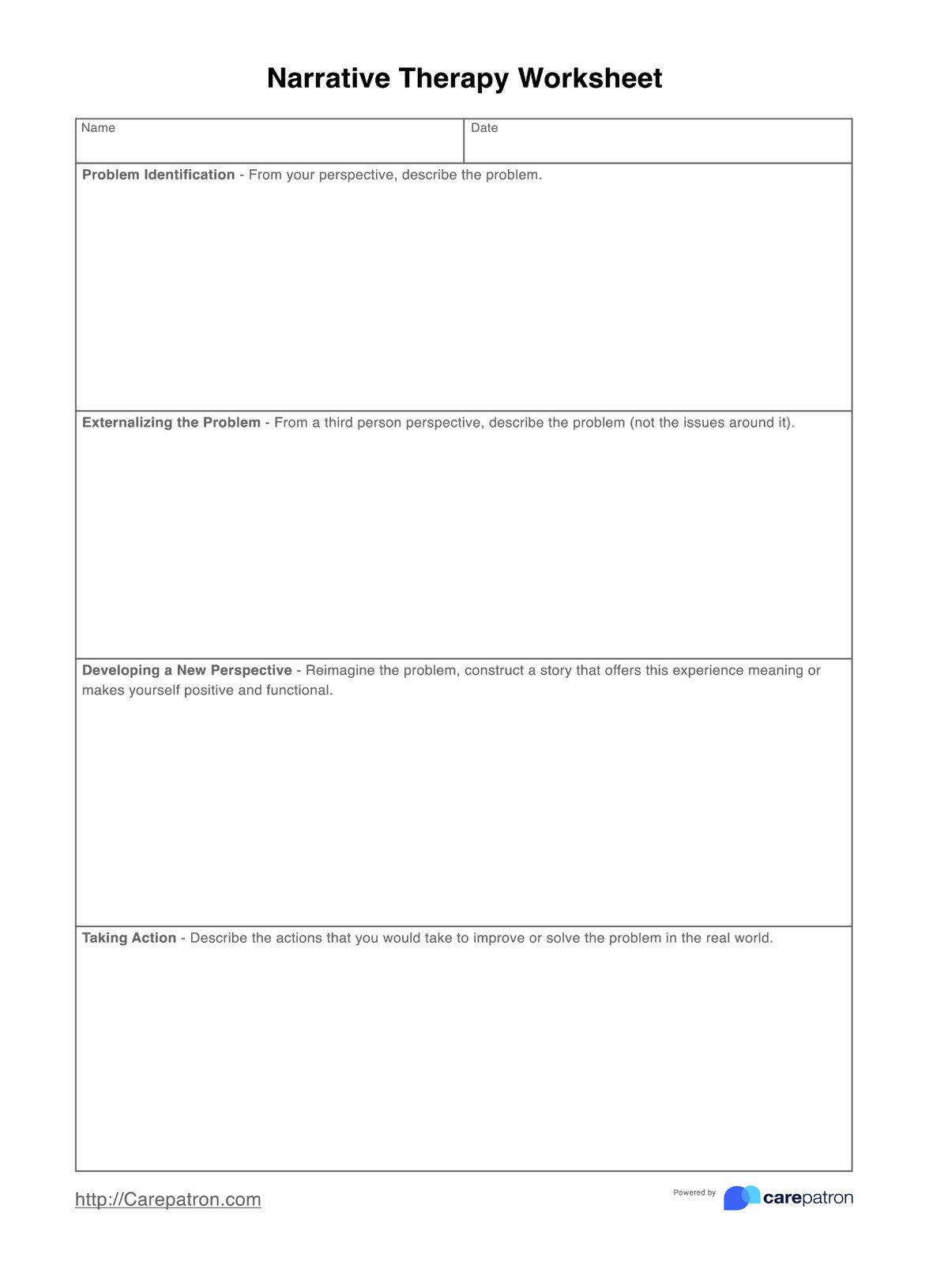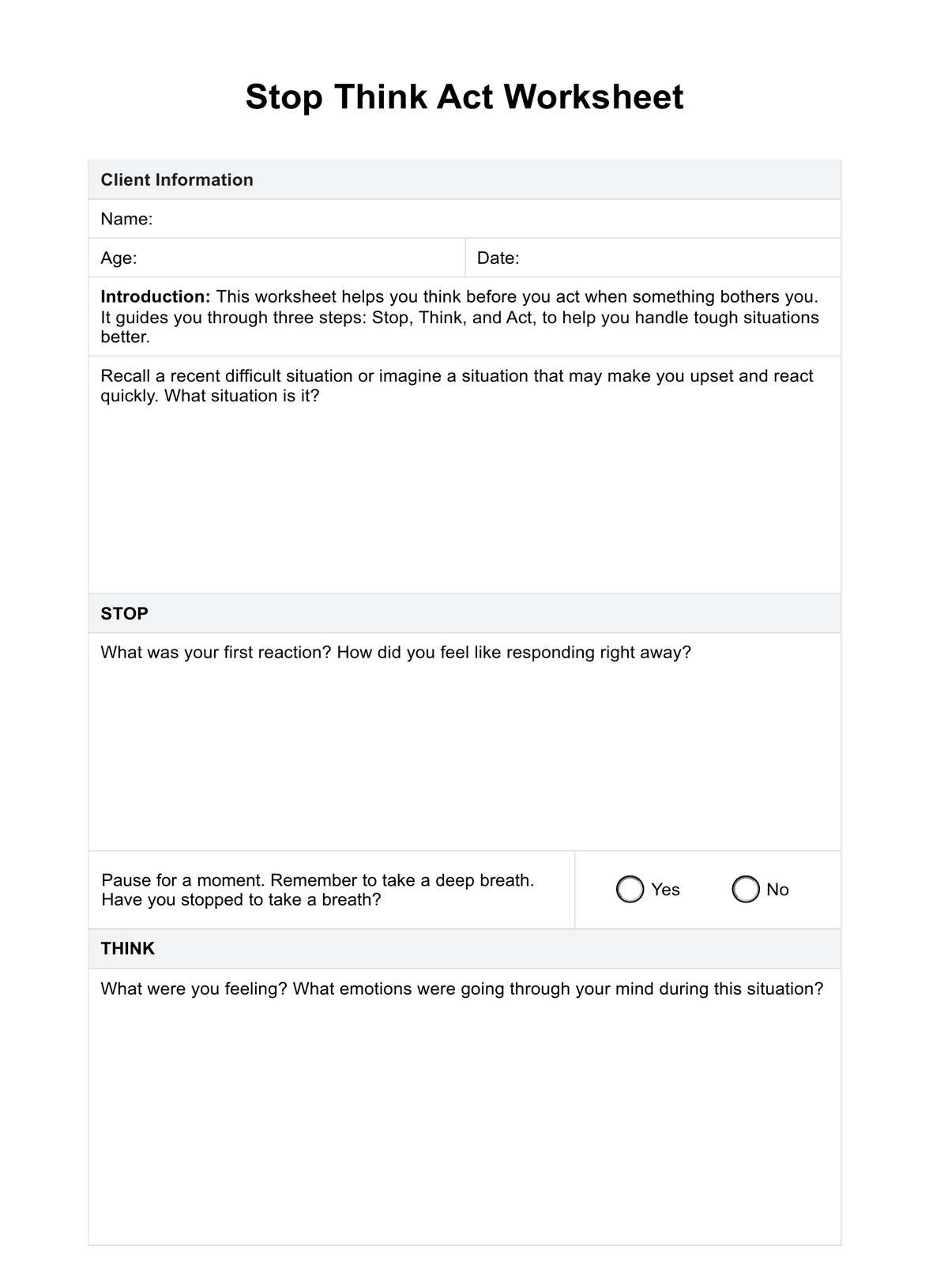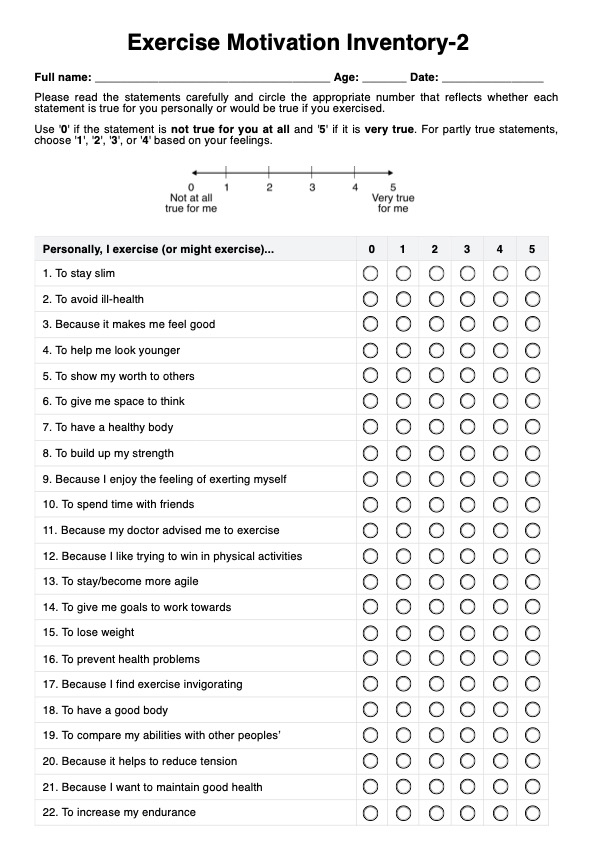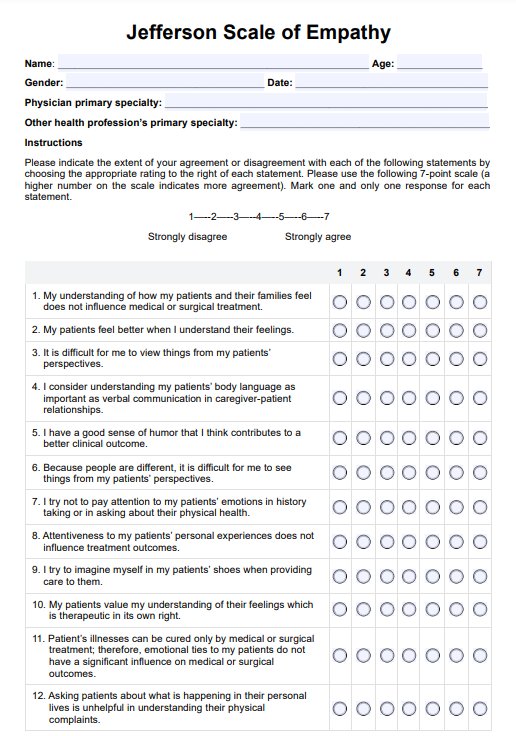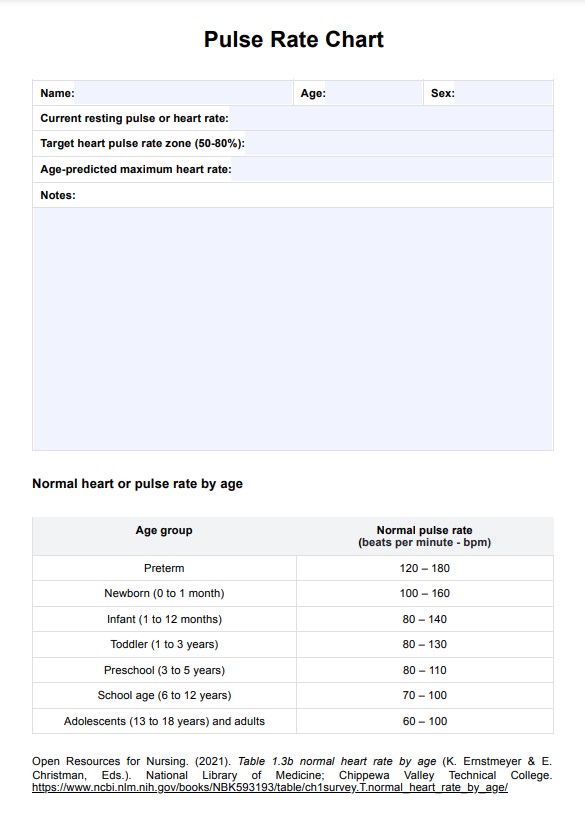Home Exercise Program PDF
Download a free Home Exercise Program PDF template to help clients work on their health and fitness goals at home.


What is a home exercise program?
A home exercise program (HEP) is a customized set of exercises designed specifically for an individual to be performed at home. It is prescribed by a healthcare professional, such as a physical therapist or physician, and aims to improve strength, flexibility, and function.
HEPs are vital in the recovery process for individuals with various health conditions, including musculoskeletal injuries, neurological disorders, and chronic illnesses. These programs can improve mobility, reduce pain, and prevent future injuries or complications. They also empower individuals to take control of their health and well-being.
Moreover, a HEP is tailored to the individual's needs and goals. It considers factors such as:
- Diagnosis or condition
- Physical limitations and abilities
- Age and overall health status
- Lifestyle and daily activities
- Available equipment and space at home
- Personal preferences and motivation levels
Healthcare professionals may also consider the individual's cultural background and social support system when developing home exercise programs.
Home Exercise Program PDF Template
Home Exercise Program PDF Example
Benefits of a home exercise program
There are numerous benefits to incorporating a HEP into your patient's healthcare plan, including:
- Convenience: Performing exercises at home eliminates the need for regular travel and appointments with a healthcare professional. This can be especially beneficial for individuals with difficulty leaving their homes due to mobility issues or transportation barriers.
- Cost-effectiveness: HEPs can be more affordable than in-person therapy sessions or gym memberships.
- Personalization: With a HEP, each exercise is specifically chosen for the individual's needs and abilities. This ensures that they are receiving the most effective treatment for their condition.
- Consistency: By having a set routine at home, individuals are more likely to stick to their exercises and see improvements in their health.
- Empowerment: HEPs give individuals control over their health and well-being. This can improve self-confidence and motivation, leading to better overall outcomes.
How does this Home Exercise Program PDF work?
Carepatron's free Home Exercise Program PDF allows healthcare professionals to easily create personalized patient exercise plans. The PDF template lets you input specific exercises, sets, repetitions, and other relevant instructions for each exercise.
Follow these steps to get started:
Step 1: Download the template
Get a copy of the Home Exercise Program PDF using the link on this page via the Carepatron app. You may also access it from our resources library, which houses various physical therapy-related templates like an Exercise Log, Physical Therapy Note Template, and more.
Step 2: Print or use digitally
You can print the PDF and fill it out by hand or type directly into the fields using a PDF editor. If you use a pen, print multiple copies to track your client's progress.
Step 3: Input exercises
For each exercise listed on the template, include specific instructions like sets, repetitions, and any modifications necessary for the patient.
Step 4: Save, share, and repeat
Once you have filled out the HEP PDF with all your client's exercises, save it for future use. You can also print and give a copy to your patient or send it electronically through Carepatron's patient portal system.
When would you use home exercise programs?
You can create customized exercise programs for patients of all ages and needs in various settings, including:
- Outpatient physical therapy clinics
- Inpatient rehabilitation facilities
- Skilled nursing facilities
- Home healthcare agencies
Home exercise programs are particularly beneficial for patients who require ongoing treatment after being discharged from a healthcare facility. These programs let them continue their rehabilitation exercises at home, maintaining their progress and preventing setbacks.
Moreover, home exercise programs can make patients feel in control of their treatment. They can see the prescribed exercises and track their progress, giving them a sense of responsibility for their health.
Tips for designing a successful HEP
To ensure your patient receives the most benefit from their home exercise program, here are some tips to keep in mind:
- Personalize: Every patient's condition is unique, as should their home exercise program. Tailor exercises according to their specific needs, abilities, and progress.
- Clear instructions: Make sure the instructions for each exercise are easy to understand and follow. Use simple language and provide visual aids if necessary.
- Motivation: Encourage your patient to regularly complete their home exercise program by providing positive reinforcement and setting achievable goals.
- Gradual progression: As the patient's condition improves, the difficulty level of exercises gradually increases to challenge them but not overwhelm them.
- Tracking progress: Ask patients to keep track of their exercises and progress in a journal or using tracking tools available on Carepatron's patient portal.
- Communication: Keep an open line of communication with your patient. Ask for feedback and address their concerns regarding their home exercise program.
Designing a successful home exercise program requires collaboration between the healthcare provider and the patient. By following these tips, you can ensure that your patients.
Commonly asked questions
HEP, or home exercise program, is specifically designed for individuals with injuries or conditions that require physical therapy. Unlike general workout plans or fitness programs, a HEP is tailored to individual needs and abilities.
Healthcare providers can improve adherence to home exercise programs by providing clear instructions, positive reinforcement, and involving patients in setting achievable goals.
Potential barriers to adherence to home exercise programs include lack of motivation, forgetfulness, physical discomfort or pain, and difficulty understanding or remembering the exercises.


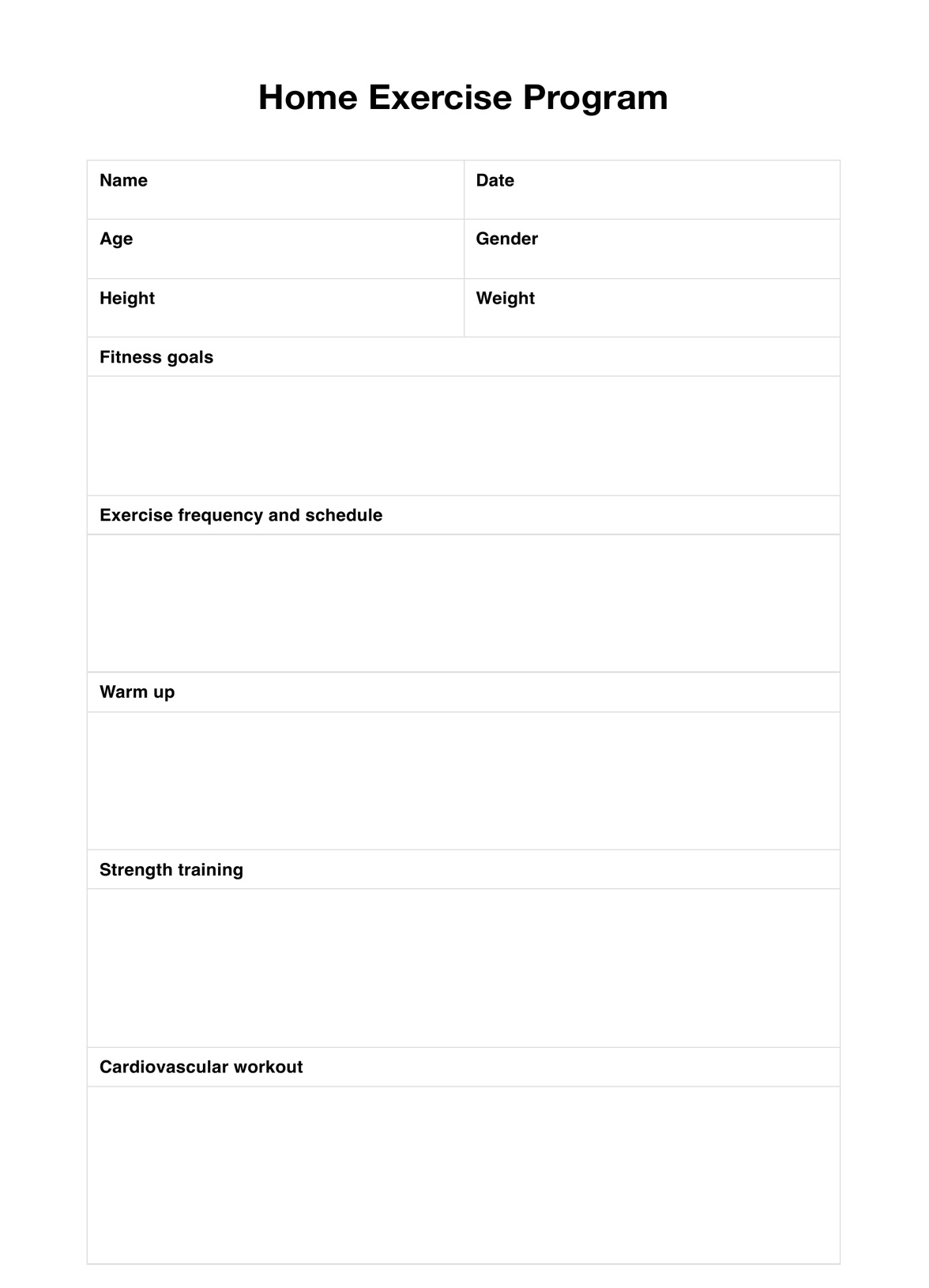
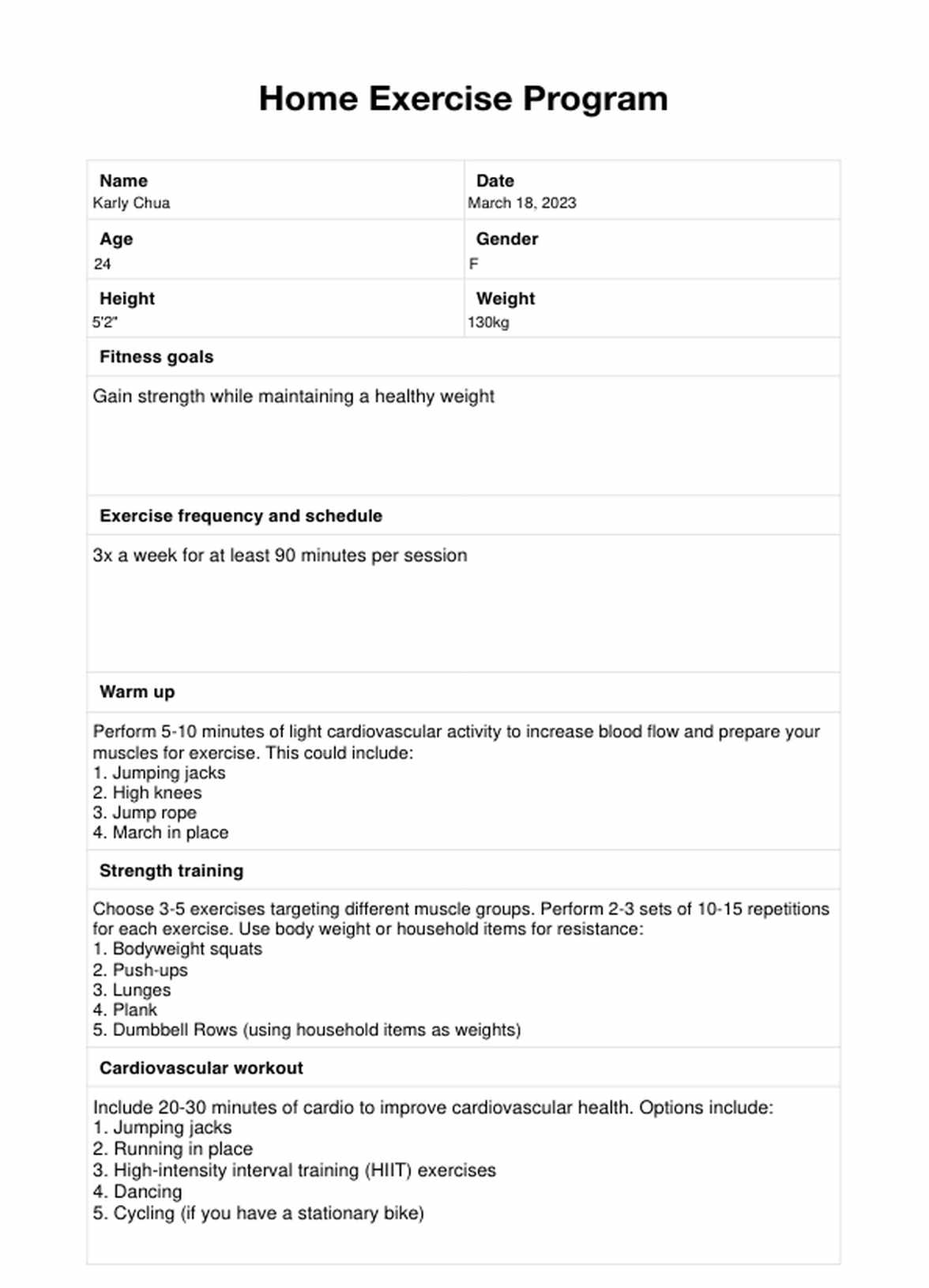


















-template.jpg)

















































































